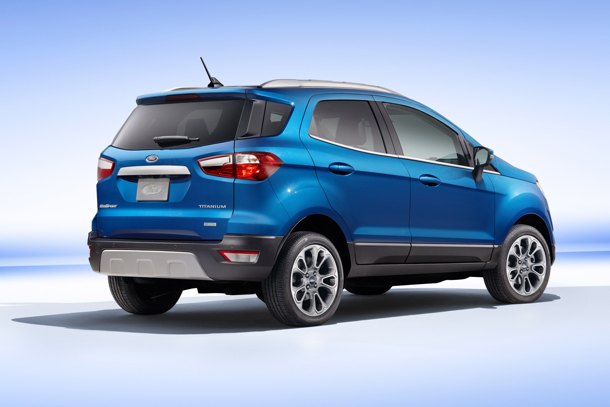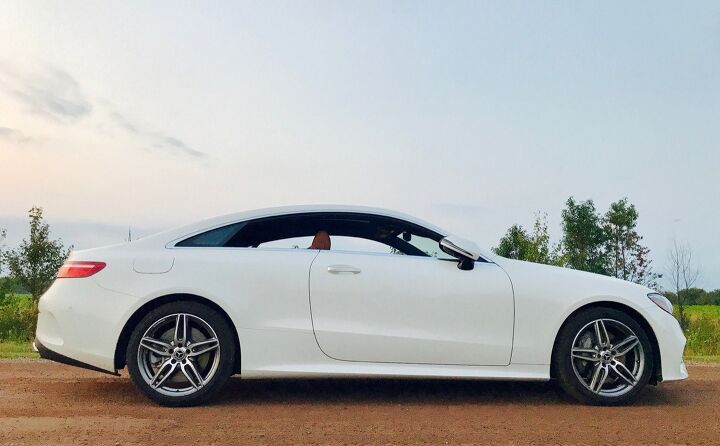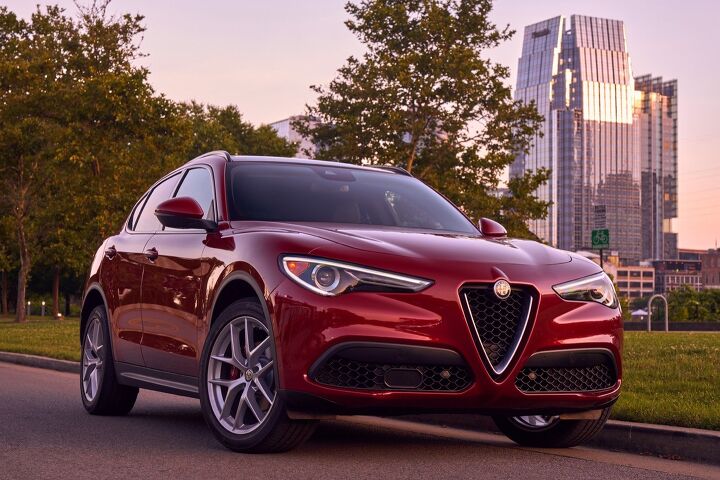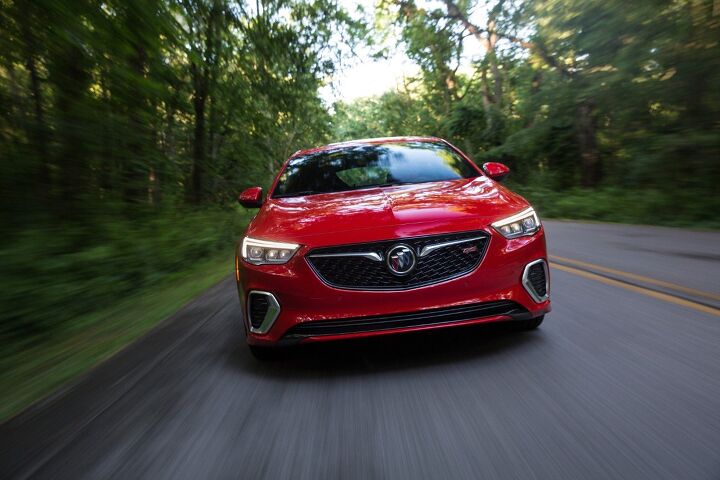#QOTDQuestionOfTheDay
QOTD: Pass or Fail?
I’m going to wager that, as a percentage, ninety-nine and a bunch more nines of TTAC readers have their driver’s license. I mean, it’s not like the ranks of our readers are filled with youth wielding keyboards their parents’ basements or anything.
With such an august readership, I’m certain there is a story or two here about getting one’s driver’s license. Like mine, for instance.
QOTD: Will Cadillac and Lincoln Regain Top-Tier Luxury Brand Status In Your Lifetime?
Cadillac enjoys some of the highest average transaction prices among premium auto brands operating in the United States. After years of Lincoln MKS disappointment, the new Lincoln Continental actually looks the part. Globally, Cadillac sales are rising month after month after month. In the U.S., Lincoln is rare among auto brands in a declining auto industry in 2017: sales at Ford’s upmarket brand have risen 3 percent this year.
Indeed, while discussing the apparent appeal of the Tesla brand last week, Jack Baruth said, “You might say that General Motors and Ford are going to build better, more reliable, and more thoroughly developed electric cars than Tesla can, and you’re probably right.”
“But the world doesn’t want an electric Cadillac or Lincoln,” Jack accurately points out, “for the same reasons it doesn’t want gasoline-powered Cadillacs or Lincolns.”
Regardless of how you grade the momentum of Cadillac and Lincoln, they are mere blips in the global luxury automobile market and remain rather inconsequential players in their U.S. home market, as well. Will that change in your lifetime?
QOTD: What's the Worst Automotive Segment?
There’s no need for detail. Nuance is unnecessary. Set aside demands for specifics.
What’s the worst type of vehicle known to humankind in 2017?
There are leaders in every category, of course. But the fact that the Ford Transit Connect is surprisingly fun to drive doesn’t make the small commercial van sector particularly appealing. Likewise, there are laggards in every category, too. Yet the Mitsubishi Lancer’s uncompetitive nature doesn’t cast a broad brush across the entire compact sedan segment.
Somewhere, however, in some corner of the vast U.S. auto industry, resides an entire segment of vehicles that is, as of 2017, the worst. It’s the segment that provides the worst return-on-investment. The vehicles in said segment haven’t moved the game forward in the same way full-size pickup trucks or American muscle cars have their own category. There’s no obvious class leader or class embarrassment because every vehicle in the category lacks true sensibility.
What vehicle category are we talking about?
QOTD: Which of These Automotive Pariahs Secretly Turns Your Crank?
This Question of the Day has its origin in a song, one which exists as something of a guilty pleasure. Actually, screw that, I’m a modern man (not postmodern, mind you) — I can admit it was Tiny Dancer by Elton John, which just happened to pop up on a Spotify playlist 15 minutes before I sat down to write this.
We often associate songs with a certain time and place in our lives, and that particular song — one of two by that artist I’ll admit to liking (the other being an apt description of a certain North Korean dictator) — immediately brought to mind a dark red, first-generation Chevrolet Corvair. A number of years back, nearing the end of a long road trip to Georgia and back, I found myself driving under leaden March skies in chilly Harrisburg, Pennsylvania, surely the sexiest city on the lower Susquehanna. Tiny Dancer came on the local station, and as I thought about life and mistakes, a burgundy-colored car came into view.
Resting just off a parking lot, it was, a “For Sale” sign stuck hopefully in its windshield. You never saw a more honest-looking 1964 Chevrolet Corvair Monza.
QOTD: Can Subaru Just Go Ahead And Sell Whatever It Wants, Wherever It Wants, Whenever It Wants?
In September 2017, Subaru reported the company’s 70th consecutive year-over-year U.S. sales increase. That’s nearly six complete years of steadily improving U.S. sales volume.
Think of it this way: 2013 was a huge year for Subaru of America as sales had risen 59 percent over the span of just two years. But in 2013, Subaru sold 424,683 over the course of the entire calendar year. In 2017, that’s a total Subaru blasted past in the first week of September.
But have you ever stopped to notice that Subaru is accomplishing much of its success with three remarkably similar variations of the same theme? Crosstrek, Forester, Outback. A bit of extra length there, a touch of extra height here, a smidgen of savings there, a dose of extra equipment here. This is hardly the historically obvious 3 Series to 5 Series to 7 Series lineup. The Crosstrek, Forester, and Outback are conceptually similar vehicles with overlapping price spectrums. And recently, with a huge leap in Crosstrek popularity, they’re all similarly popular, too.
You almost get the sense Subaru could squeeze an Outback “four-door coupe” in there and sell 12,000 of those each month, too.
QOTD: It's 2017 - Would You Buy a Coupe?
At new car dealerships, coupes are thin on the ground. The demise of the Honda Accord coupe at the end of the 2017 model year shutters the mainstream midsize coupe segment, a category long since diminished by the disappearance of two-door Camrys, Altimas, and the Avengers.
Compact coupes are rare, too. You won’t find two-door versions of the Chevrolet Cruze, Ford Focus, Hyundai Elantra, Nissan Sentra, Subaru Impreza, Toyota Corolla, or Volkswagen Jetta, although their predecessors all offered coupe variants.
Chevrolet Monte Carlo, Chrysler Cordoba, Ford Thunderbird? Long gone. But coupes — genuine two-doors such as the pillarless Mercedes-Benz E400 4Matic I’m driving (and being massaged by) this week, or the Honda Civic, or the Infiniti Q60, or the Rolls-Royce Wraith — are still available.
Would you buy one?
QOTD: Do the New Chevrolet Tahoe Grande's Sliding Doors Make It a Van or an SUV?
Would a minivan with all-wheel drive, added ground clearance, and wheel arch cladding ever stand a chance of being called an SUV?
It’s not so far-fetched. There was a time when the Subaru Outback was perceived as nothing more than a wagon, but times changed.
What about the other way around: does the Chevrolet Tahoe Grande’s sliding doors necessitate a minivan designation for America’s top-selling full-size SUV? In other words, is a full-size SUV with sliding doors no longer an SUV?
QOTD: Camry, Camry, on the Wall, Which Is the Greatest Toyota Camry of Them All?
The launch of the 2018 Toyota Camry in July 2017 marked the arrival of America’s eighth Camry. Near the end of Ronald Reagan’s first term, the first Camry — not the first Camry, but the first Camry available for U.S. consumption — was launched in front-wheel-drive sedan and hatchback formats.
By 1997, the Camry was America’s best-selling car — a title it has held in each of the last 15 years.
The second-generation Camry spawned a V6 powerplant, available all-wheel drive, and a hatchback-replacing wagon. The third-generation Camry kept the sedan and wagon, dropped the AWD, added a coupe, and was built in America. The fourth iteration of the Camry, 1997-2001, dropped the wagon and began to be seen as the automatic choice for America’s midsize sedan buyers. The fifth Camry, which ran from 2002-2006, was sturdy enough to be form the foundation for two more Camry generations. The sixth Camry was the first to be available as a hybrid, but it put an end to the coupe, which in the prior two generations was known as Camry Solara. The seventh Camry, 2012-2017, sometimes hailed as the most American-made of all cars, benefited from a thorough refresh for 2015. The eighth Camry, at dealers now, represents much more than a major overhaul, with significant increases in fuel economy standing out as a leading improvement.
But which Toyota Camry is best of all?
QOTD: Is the Column Shifter the Best Shifter Design There Ever Was or Ever Will Be?
Setting aside the glorious wonders of the manual, DIY shifter, is it not becoming increasingly clear that the automatic transmission shifter reached its zenith with the traditional column shifter?
One thing is certain: the column shifter is quickly fading away. The electronic controls behind many shifters are more often linked to unnecessarily complicated shifters than a simple, intuitive, steering column-mounted unit. There are pushbutton affairs on the center stack in Lincolns, rising and falling console-mounted pushbutton arrangements in Hondas and Acuras, rotary dials in everything from the Ford Fusion and Ram 1500 to the Jaguar XJ, monostable shifters with no detents in vehicles of every sort, and a horizontally opposed array of buttons and switches in a GMC Terrain that GMC felt necessary to explain for three hours.
We’re not sure these alternative shifters have shoved society along the path toward enlightenment.
But when Ford’s North American product communications manager, Mike Levine, tweeted a picture of a 2018 Ford F-150 with a 10-speed automatic and a column shifter — merging the past and future — we naturally wondered whether column shifters deserve more involvement in the present.
QOTD: Does Any Car Do a Better (or Worse) Job of Looking Good and Bad Than the Chevrolet Malibu?
Sometimes the little things make a big difference. Body color door handles, for example, can take a simple compact car from appearing fit for penalty box duty to appearing worthy of driveway placement. Swap those black side mouldings and matte black mirror housings for body color paint and you’re home free.
In other instances, the absence of foglights in foglight housings turns a decent front fascia into a disappointment. A bigger front air dam has the potential to suggest the addition of horsepower. Chrome window surrounds, upgraded lighting, metallic paint, and red-trimmed grilles can add a premium aura to otherwise pitiful products.
Oh, and don’t forget the wheels. Wheels can cover a multitude of design errors.
But does any car benefit more from big, stylish wheels; body colour mirrors; and LED daytime running lights than the 2017 Chevrolet Malibu? And does any car suffer more from small wheels with puffy tires, black mirrors, and stock lighting than the 2017 Chevrolet Malibu?
QOTD: Will Volkswagen Be Forever Punished for Its SUV Tardiness?
The Nissan Juke and Mini Countryman arrived in the United States in 2010. The Subaru Crosstrek appeared two years later.
Buick’s Encore appeared at U.S. dealers in 2013; its Chevrolet Trax partner the following year. 2015 saw the arrival of the Fiat 500X, Jeep Renegade, Honda HR-V, and Mazda CX-3. The (FWD-only) Toyota C-HR landed in April 2017. The Hyundai Kona was unveiled in June 2017 and will show up in U.S. Hyundai stores this coming winter.
And on August 23, 2017, Volkswagen will unveil the T-Roc, which isn’t likely to go on sale in the United States until 2019. That’s nine years late.
Will the T-Roc’s tardiness cause the subcompact Volkswagen crossover to suffer the marketplace consequences just as its overdue siblings always have?
QOTD: Camry Now Or Accord Later?
By the time the all-new 2018 Honda Accord debuted at a July 14, 2017, launch event, the all-new 2018 Toyota Camry was already on sale.
There are still sedan buyers alive in this world, you see. You might just be among them. Toyota and Honda will sell some 700,000 Camrys and Accords in the United States in 2017, roughly four out of every 10 midsize cars.
So, presented with two new options from the preeminent manufacturers of midsize sedans, what choice do you make? A 2018 Toyota Camry right now, with all the glory of a J-VIN and a 301-horsepower V6? Or do you wait a few weeks for the 2018 Honda Accord, a sports sedan on the cheap with a 2.0T and a six-speed manual?
QOTD: Would You Buy a Car in Its First Model Year?
There are a large number of major new vehicle introductions happening in the United States in 2017.
The all-new 2018 Toyota Camry is arriving at dealers as we speak. The all-new 2018 Honda Accord is weeks away. Ford’s 2018 F-150 revamp is a thorough mid-cycle update. The Kia Niro, a unique Toyota Prius alternative, arrived early this year. Mazda brought a new bodystyle to the MX-5 Miata in RF trim. The Subaru Crosstrek, quickly becoming a mainstream compact car option, is new for 2018. The Alfa Romeo rebirth continues with the Giulia, still ramping up, and the arriving-now Stelvio. The all-electric Chevrolet Bolt arrived in late December, as did a new version of America’s historic best-selling utility vehicle, the Honda CR-V. The list goes on: Tesla Model 3, Jeep Compass, Ford Expedition, Land Rover Discovery, Lexus LC, Toyota C-HR, Volkswagen Atlas, Volvo XC60.
And, thank our lucky stars, we can’t forget the early summer arrival of Honda’s fifth-generation Odyssey.
New engines, new transmissions, new wiring harnesses, new technology, new roof-folding mechanisms, new Italians. Is it just too much… new everything? Would you buy any of these vehicles in 2017, or is it best to wait until the second model year?
QOTD: Do You Care Where Your Car Is Built?
Americans who take possession of a new Jaguar E-Pace can check their VIN to see that the subcompact luxury crossover was assembled in Austria. Each of the 36,813 Buick Envisions sold in the United States through June were imported from China. The Ford Fusion comes from Hermosillo, Mexico; the Honda Accord comes from Marysville, Ohio.
BMW builds SUVs in South Carolina. Mercedes-Benz builds cars and SUVs in Alabama. Volkswagen builds the Atlas and Passat in Tennessee. The Toyota Camry is built in Kentucky, although there’ll be a handful of new 2018 models coming all the way from Japan.
The global automotive market has spoken. “A lot of consumers have no idea where their cars are built,” Renault’s Francois Mariotte tells AutoExpress. Perhaps there are customers who struggle with the notion of German cars being assembled in Mexico, for example, but as Renault’s Mariotte says: “The quality of the car is never determined by the country it’s built in. It’s determined by the processes we put into the factory.”
But do you care where your next new vehicle is assembled?
QOTD: Is Buick a Premium, Luxury, Upmarket Auto Brand in America, or Not?
Use whatever designation you must, but you know what we’re asking. In 2017, is Buick one of America’s premium brands? A competitor for Lexus and Audi? A rival for BMW and Jaguar?
On July 19, Buick released the first images, specs, and pricing details for the next-generation 2018 Buick Regal GS. While dropping the price of the basic Regal to $25,915 — not that much money for a 250-horsepower 2.0T midsize hatchback — Buick apparently improved the sporty GS in every way. The result: the GS is only ten bucks away from being a $40,000 car. The more powerful Ford Fusion Sport is $5,510 cheaper. The Audi S4 is some $12,000 more costly.
But Buick is more than just an intangible no-man’s-land price point. Buick is also a brand that sends mixed messages: advertising that suggests it’s not worthy of praise on the one hand; the new Avenir sub-brand on the other.
What say you: is Buick just another luxury wannabe, or is Buick selling premium goods at a discount?






























Recent Comments